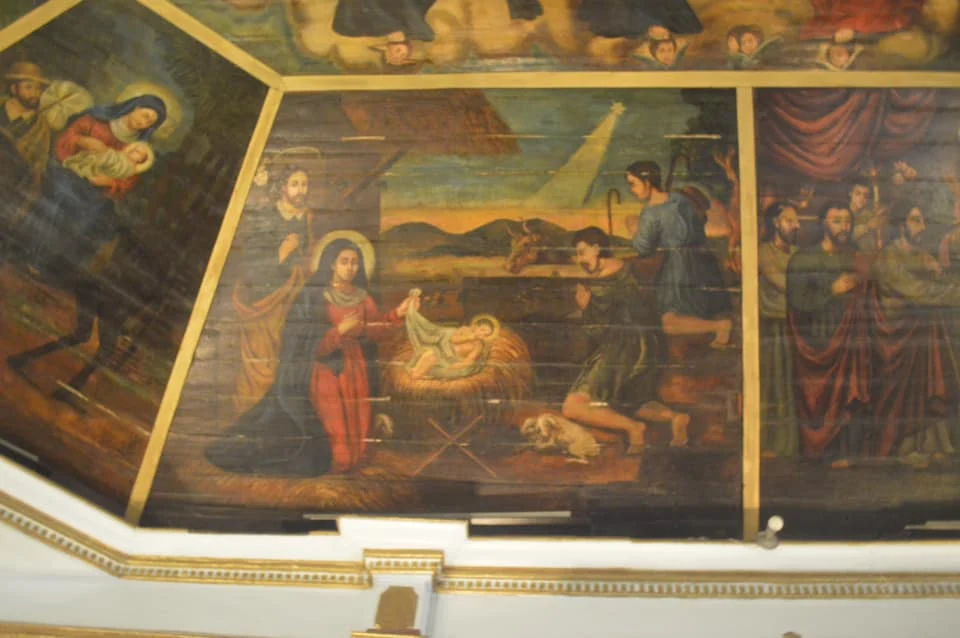The Camarin De La Virgen of the Parish Church of Nuestra Señora De Los Desamparados in Sta. Ana, Manila [Philippine National Cultural Treasures]
Our architectural and built heritage tells us the story of our building traditions. One example is the Camarin De La Virgen of The Parish Church of Nuestra Señora De Los Desamparados in Sta. Ana, Manila.
The Parish Church of Nuestra Señora De Los Desamparados in Sta. Ana, Manila was built on a prehistoric burial site that was used from the 11th to the 14th centuries AD. The present church-convent complex is located on a parcel of land bounded New Panaderos Street on the north, Calderon Street on the west, and Lamayan Street on the south.
The church is cruciform in plan oriented with its main portal facing north, and an inner court enclosed by the adjoining convent on the east. It is famous for its image of Our Lady of the Abandoned. Devotees visit and pay homage for the customary Pahalik at The Camarin De La Virgen. Featuring 18th century paintings at the entrance and ceiling, it is a vestuary situated on the second floor south of the church’s main altar or retablo mayor. The Camarin De La Virgen was declared National Cultural Treasure by the National Museum in 2008.
Considered as the most significant feature of the church, the Camarin was “constructed from 1720 to 1725, xxx has retained much of its original appearance with painted ceiling, gilded pilasters, azulejos tile floor, capiz windows and other original features.” It is oriented with its longitudinal axis on the east-west axis, with a south interior wall shared with the church retablo, and the main portal or access on the east.
The Camarin has secondary access doors on three interior walls (east, south and west). The camarin measures 9.91 meters in length and 5.6 meters in width. It has a recessed ceiling segmented into ten (10) quadrilaterals and one central octagon, all decorated with paintings on wood.
While the central octagonal painting depicts Heaven, the surrounding paintings illustrate scenes from the lives of the Blessed Virgin and the young Jesus. One remarkable painting is the rendition of “Nativity and Adoration of the Shepherds.” The Camarin’s ceiling height varies with 4.2 meters at its lowest point, and 5.7 meters at the central apex area. It is made of wood planks fastened on 4.5 centimeters by 10.5 centimeters wooden framework constructed as part of the roof’s trusswork. The typical wooden truss is built up of bottom chords of about 17 centimeters by 18 centimeters, and top chords of about 19 centimeters by 12 centimeters. Supporting the paintings, the wood planks (varying from 18 to 19 centimeters in width) are joined edge to edge along the wood grain.
The paintings at the Camarin were restored in the 1970s by Architect Antonio Dumlao. The most recent restoration work done on the its ceiling paintings was in 2009-2010. There are indications of ground and paint layer losses at the joint (along the wood grain) between the wood planks. The backside of the ceiling’s wood planks and framework have indications of dirt and dust.
The Camarin De La Virgen is generally in good state of conservation and maintenance. However, the ceiling paintings, as constituent part of the roof considered a vulnerable building component, remain at risk to natural hazards such as typhoon. Painted architectural surfaces such as the wooden plank ceiling to create architectural interior such as that of the Camarin De la Virgen demonstrate the ingenuity among other built traditions of our National Cultural Treasures. These are Philippine built traditions worthy of preservation.
________________________
Credits:
Text and photos by Archt. Arnulfo Dado / NMP AABHD
© National Museum of the Philippines (2020)






No comments:
Got Something to Say? Thoughts? Additional Information?